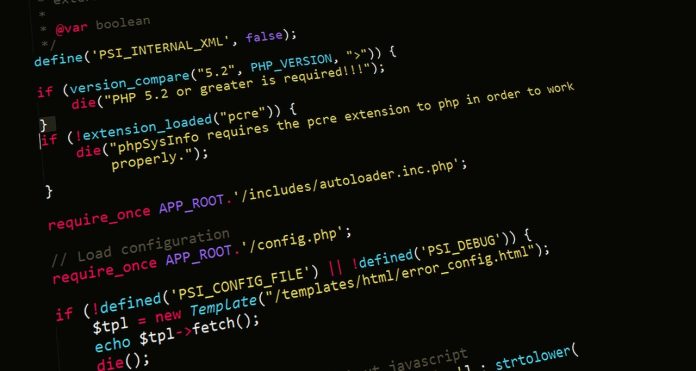Last Updated on April 16, 2024 by Saira Farman
PHP Laravel is a popular open-source framework for web development. It is based on the PHP programming language and was created by Taylor Otwell in 2011. Laravel has grown to become one of the most popular PHP frameworks, thanks to its elegant syntax and powerful features.
Advantages of PHP Laravel
One of the main advantages of using Laravel is its ability to speed up the development process. Laravel comes with a wide range of tools and features that help developers to quickly build robust, scalable, and maintainable web applications. This includes things like routing, middleware, blade templating engine, and more.
Model-View-Controller (MVC)
The Laravel framework follows the Model-View-Controller (MVC) architecture pattern, which helps to separate the application’s logic, data, and presentation layers. This makes it easier for developers to manage and maintain the code, which results in a more efficient development process.
Object-Relational Mapping (ORM)
Another advantage of Laravel is its built-in support for object-relational mapping (ORM). This allows developers to interact with the database using an object-oriented syntax, rather than writing raw SQL queries. Laravel’s Eloquent ORM is particularly popular among developers, as it provides an easy-to-use and intuitive syntax for working with the database.
Command-Line Interface (CLI)
Laravel also provides a powerful command-line interface (CLI) tool, known as Artisan. This tool helps developers to automate repetitive tasks, such as creating controllers, models, and migrations. This means that developers can spend more time working on the important parts of the application, rather than getting bogged down by repetitive tasks.
Command Line Interface (CLI) is a way of interacting with a computer through the use of text-based commands, rather than a graphical user interface (GUI). CLI is commonly used for tasks such as system administration, automation, and software development.
One of the main advantages of using CLI is its flexibility. Because it is text-based, it can be used on any operating system and can easily be integrated with other command-line tools and scripts. This means that tasks can be automated and performed more efficiently.
CLI also provides a higher level of control over the system. With GUI, you are limited to the options that are provided by the interface. With CLI, you have access to all of the underlying system commands. Which allows you to perform more advanced tasks and troubleshoot problems more easily.
Another advantage of CLI is its ability to handle large amounts of data. CLI tools and commands can process data in bulk. Which makes them well-suited for tasks such as data analysis and backups.
CLI also has a steep learning curve but once you know the commands, it is more efficient. This is because CLI commands are often shorter and more precise than GUI-based alternatives. It is also possible to create scripts that automate complex tasks. Which can save a lot of time and effort in the long run
Key Features of PHP Laravel
One of the key features of Laravel is its built-in support for authentication and authorization.PHP Laravel comes with a pre-built authentication system that can be easily integrated into your application, saving you time and effort. It is also provides a powerful validation system, which helps to ensure that the data entered into the application is correct and valid.
This is also provides a built-in task scheduler, which allows developers to schedule repetitive tasks to run automatically at a specified time. This can be useful for things like sending emails, generating reports, or running backups.
Important Aspect of Web Development
Another important aspect of web development is testing. PHP Laravel provides built-in support for unit testing, which helps developers to ensure that their code is working as expected. It is also comes with a powerful testing framework, known as PHP Unit, which allows developers to create automated tests for their application.
Laravel also provides a built-in queue system. Which allows you to defer the processing of a time-consuming task, such as sending an email or generating a report. This means that the task can be performed in the background, without delaying the response time of the application.
Laravel’s built-in support for caching helps to speed up the performance of the application. Laravel supports several caching backends, including Memcached and Redis, which allows developers to take advantage of their features.
Finally, Laravel provides a built-in error and exception handling system. Which helps to catch and handle any errors that occur in the application. Laravel’s error and exception handling system is flexible and customizable. Which means that developers can create their own error pages and messages.
Conclusion
In conclusion, Laravel is a powerful and versatile PHP framework that can help developers to build robust, scalable, and maintainable web applications. Its elegant syntax, powerful features, and built-in support for things like authentication, authorization, and validation. And testing make it a popular choice among web developers. For more blogs about web development, follow sufian amjad. Additionally, its built-in support for caching, task scheduling, and error handling make it a great choice for building performance-sensitive applications.











